
Today is Good Friday, the day that Jesus was crucified and died for our sins so that when we believe in Him, we can have eternal life. What we call Holy Week was a series of events leading up to the crucifixion and the resurrection of Jesus Christ. Holy Week begins with Palm Sunday and goes through Holy Monday, Holy Tuesday, Holy Wednesday, Maundy Thursday, Good Friday, Holy Saturday, and Resurrection Sunday (also known as Easter Sunday).
Palm Sunday
On Palm Sunday, Jerusalem was busy preparing for the Passover feast, which commemorated when the Lord went to kill all the firstborns in Egypt to get Pharaoh to release His people and for the Lord to passover a home the Hebrews had to take passover lamb’s blood and paint it on their door posts (see Exodus 11-12). During the first Passover, the Lord was showing Egypt, the Hebrews, and all the world that their false gods were no match for Him, and that He is the Lord of Lords and King of Kings. During the Passover feast that was being prepared in Jerusalem, Israel did not fully understand that their Messiah was in their midst or what He represented; however:
“The large crowd who had come to the feast, when they heard that Jesus was coming to Jerusalem, took the branches of the palm trees and went out to meet Him, and began to shout, “Hosanna! Blessed is He who comes in the name of the LORD, even the King of Israel.” Jesus, finding a young donkey, sat on it; as it is written, “Fear not, daughter of Zion; behold your King is coming, seated on a donkey’s colt.” These things His disciples did not understand at the first; but when Jesus was glorified, then they remembered that these things were written of Him, and that they had done these things to Him. So the people, who were with Him when He called Lazarus out of the tomb and raised him from the dead, continued to testify about Him. For this reason also the people went and met Him, because they heard that He had performed this sign. So the Pharisees said to one another, “You see that you are not doing any good; look the world has gone after Him.”
John 12:12-19 NASB
Jesus and His disciples retrieved the donkey and colt in Bethphage, which is the east of Jerusalem at the Mount of Olives. They traveled to the Golden Gate, which is where the Triumphant Entry happened.
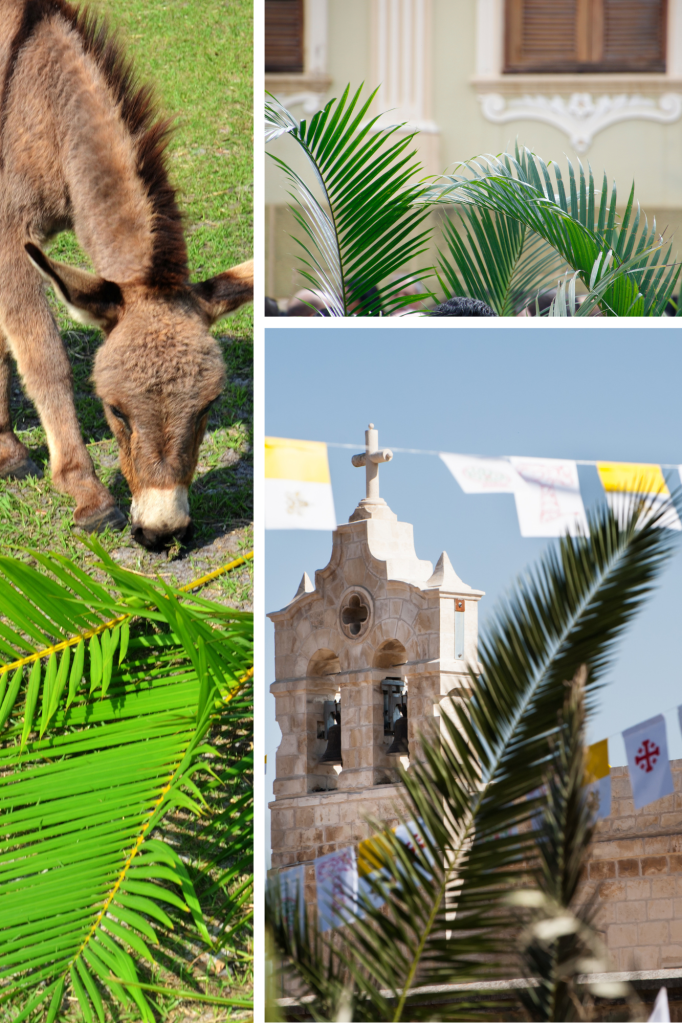
Holy Monday
On Holy Monday, Jesus cursed the fig tree on His way back into Jerusalem, and the fig tree withered at once. The fig tree had leaves on it and was not in the season to have figs (leaves and figs were supposed to come on at the same time), but it was a metaphor for Israel who was showing that they had fruit when they really did not have fruit. The Pharisees acted like they had their lives put together in a way that was pleasing to God; however, the truth was:
“This people honors me with their lips, but their heart is far from me; in vain do they worship me,teaching as doctrines the commandments of men.”
Matthew 15:8-9 ESV
Israel had their Messiah that they had been waiting for their whole lives, and they did not see Him. And if they did see Jesus, they did not understand the mission that He was on.
Jesus then went to the temple, which is located on Mount Moriah, and saw that they were making it a money exchange rather than a place of worship and prayer. Therefore, He turned the tables over and ran the money exchangers out of the temple. This was the second cleansing of the temple that He had done. That night, He and the disciples stayed in Bethany which is towards the east of Jerusalem.
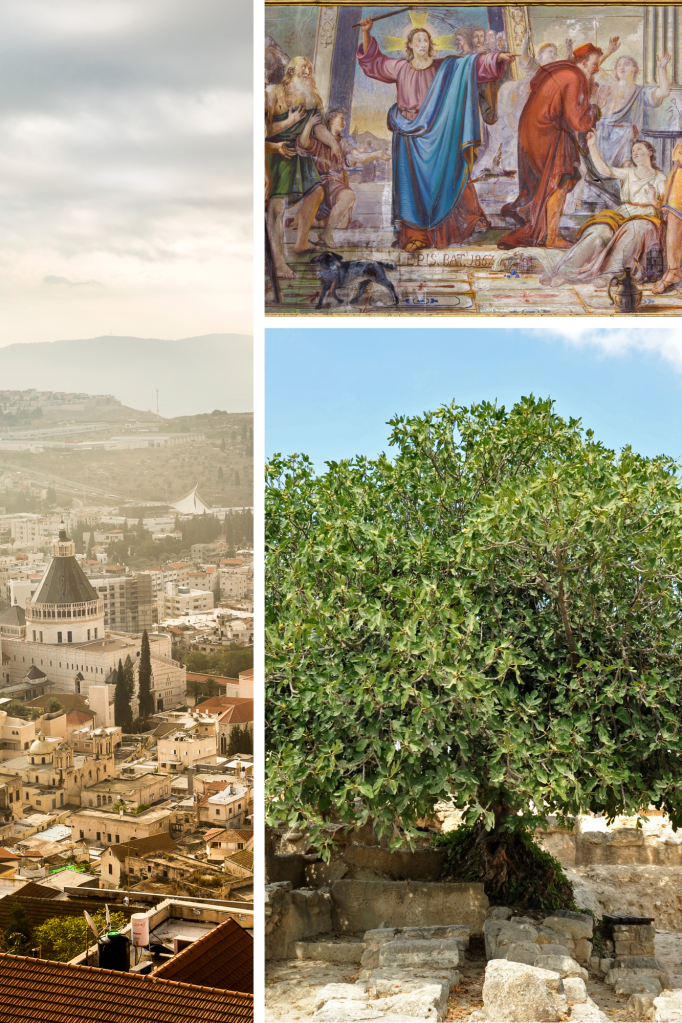
Holy Tuesday
On Holy Tuesday, Jesus and the disciples went back into Jerusalem to the temple. Jesus spoke in some parables, which angered the Pharisees and the Sadducees. The Pharisees questioned Jesus’ authority to teach:
When He entered the temple, the chief priests and the elders of the people came to Him while He was teaching, and said, “By what authority are You doing these things, and who gave You this authority?” Jesus said to them, “I will also ask you one thing, which if you tell Me, I will also tell you by what authority I do these things. The baptism of John was from what source, from heaven or from men?” And they began reasoning among themselves, saying, “If we say, ‘From heaven,’ He will say to us, ‘Then why did you not believe him?’ But if we say, ‘From men,’ we fear the people; for they all regard John as a prophet.” And answering Jesus, they said, “We do not know.” He also said to them, “Neither will I tell you by what authority I do these things.”
Matthew 21:23-27 NASB
At the end of the day, Jesus and the disciples returned to Bethany at the Mount of Olives, where He spoke the Olivet Discourse. For more info on the Olivet Discourse, you can look at these resources:
The Mount of Olives is on the east side of Jerusalem.
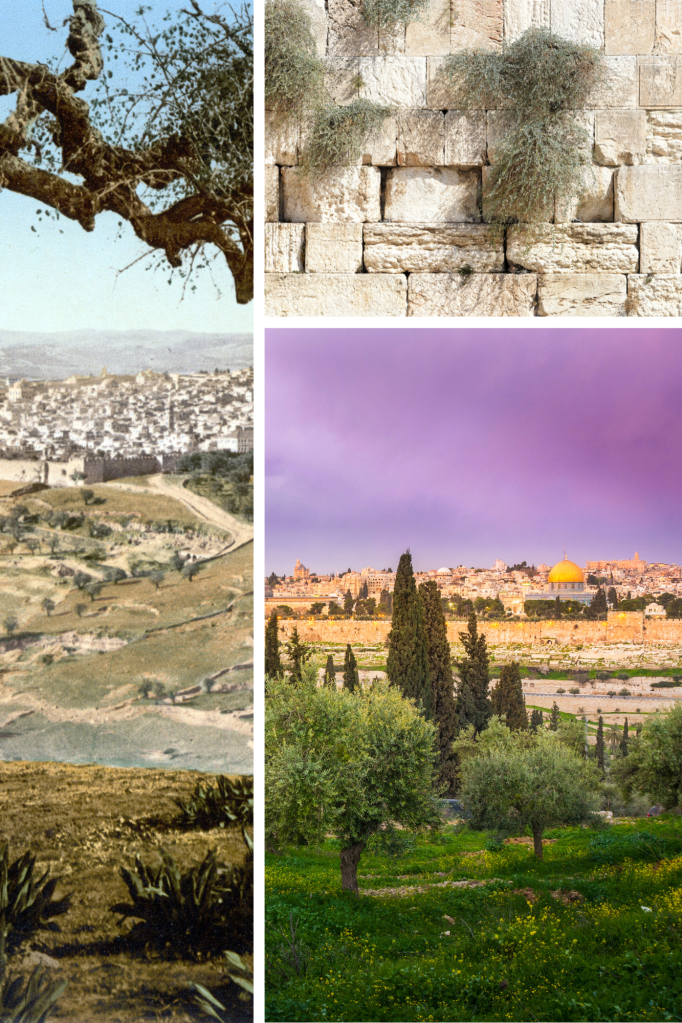
Holy Wednesday
Jesus went and taught in the temple, made preparations for the Passover, and at night went to stay on the Mount of Olives (Luke 21:37-38). That evening the Sanhedrin plotted to kill Jesus (Luke 22:1-2).
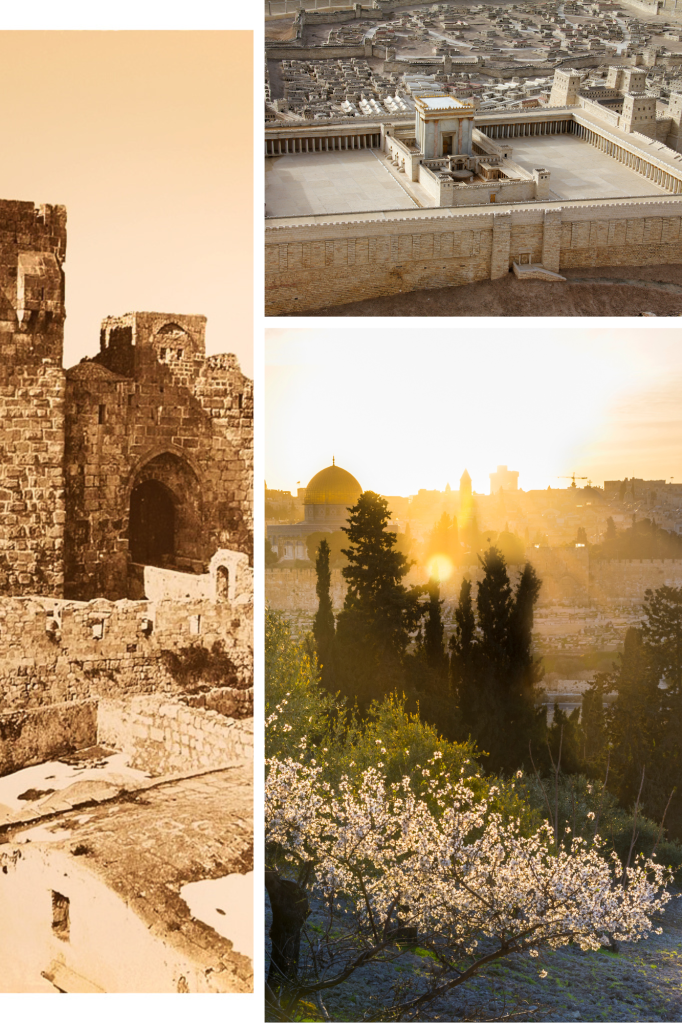
Maundy Thursday
On Thursday, Jesus made more preparations for the Passover Supper, which was that evening. It is also known as the Last Supper because it was the last meal that He had before He was crucified. The Passover Supper which Jesus and the disciples ate was in the Upper Room in a home in Jerusalem; it is traditionally believed to be in the Essene Quarter. In the room, Jesus gave what is called the Upper Room discourse, where He was preparing His disciples on what would come next – His death, His Resurrection, and the new covenant. After dinner, Jesus and the disciples went to the Mount of Olives to pray, where Jesus sweat drops of blood due to the stress He was under. It was in the Garden of Gethsemane that He prayed that the Father would take the cup of wrath away but resolved to do His Father’s will above all else:
“Then Jesus came with them to a place called Gethsemane, and said to His disciples, ‘Sit here while I go over there and pray.’ And He took with Him Peter and the two sons of Zebedee, and began to be grieved and distressed. Then He said to them, ‘My soul is deeply grieved, to the point of death; remain here and keep watch with Me.’ And He went a little beyond them, and fell on His face and prayed, saying, ‘My Father, if it is possible, let this cup pass from Me; yet not as I will, but as You will.'”
Matthew 26:36-39 NASB
Related Blog Post: Maundy Thursday
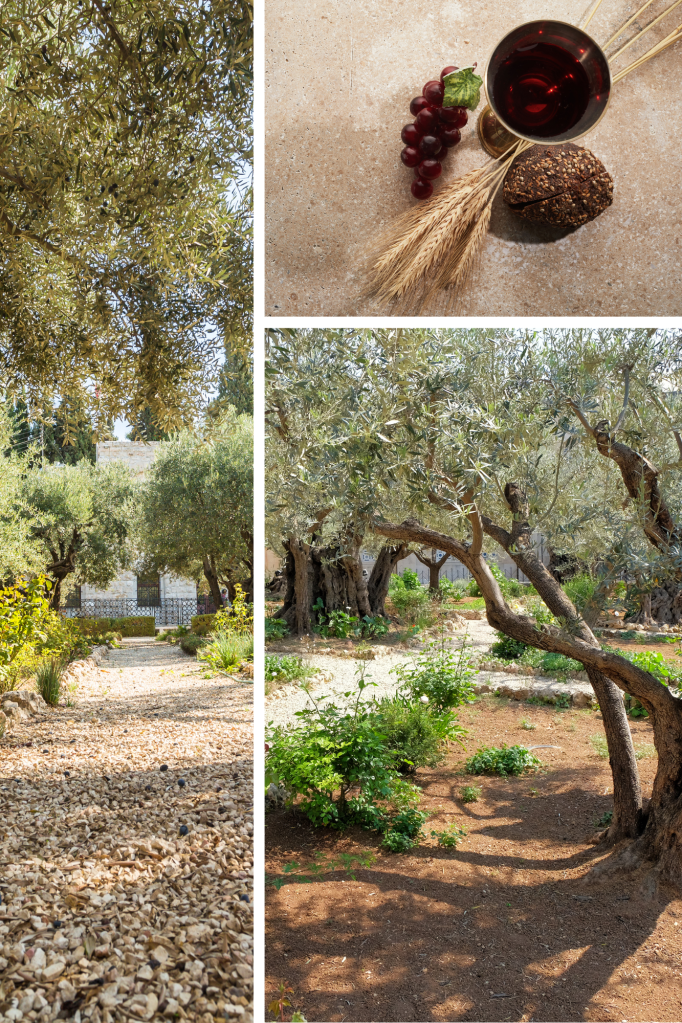
Good Friday
Sometime in the morning hours close to midnight on Friday, Judas Iscariot came with the Roman cohort and officers from the chief priests and Pharisees into the Garden of Gethsemane, which was near the Kidron Valley, to arrest Jesus. Since it was near midnight, it was dark, so this crowd had lanterns, torches, and weapons. According to Bible Ref, the Roman cohort (Greek word speria) had up to 600 soldiers, and the officers could have been several people as well (according to Bibleversestudy.com).
Even though there were that many people in the Garden of Gethsemane to arrest Jesus, He was still fully under control of the situation:
So Jesus, knowing all the things that were coming upon Him, went forth and said to them, “Whom do you seek?” They answered Him, “Jesus the Nazarene.” He said to them, “I am He.” And Judas also, who was betraying Him, was standing with them. So when He said to them, “I am He,” they drew back and fell to the ground. Therefore He again asked them, “Whom do you seek?” And they said, “Jesus the Nazarene.” Jesus answered, “I told you that I am He; so if you seek Me, let these go their way,” to fulfill the word which He spoke, “Of those whom You have given Me I lost not one.”
John 18:4-9 NASB
Jesus was not begging for the lives of the disciples to be spared; He was telling the large crowd to let them go. It was a command; Jesus was totally in command and sovereign. This was a King willingly going to the Cross to give His life to take the punishment for our sins that we would believe in Him and live.
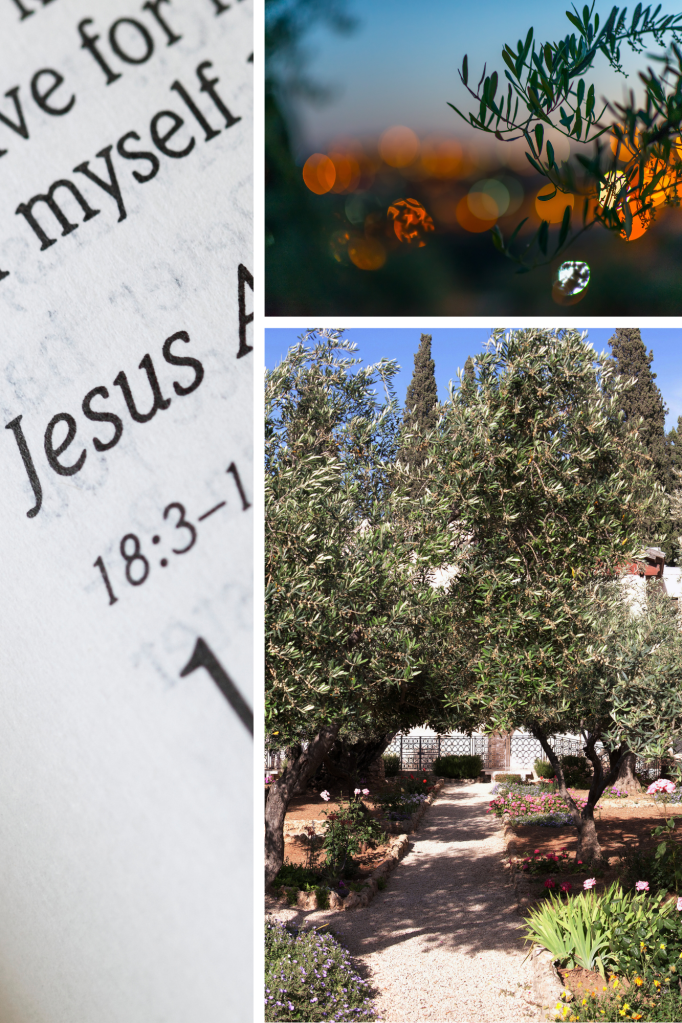
After the arrest, Jesus had the Jewish trial in front of Annas, who formerly served as the high priest and was the father-in-law of Caiaphas, the current high priest. Annas’ house was in the Essene Quarter, near the Upper Room. Annas did not get the information he wanted out of Jesus, so he sent Jesus to Caiaphas and part of the Sanhedrin. This trial was in the court of the high priest, Caiaphas. Before Caiaphas, Jesus kept silent. So Caiaphas brought in the full Sanhedrin, and Jesus kept silent but Caiaphas charged Jesus with blasphemy. The trial before the full Sanhedrin was close to or after sunrise.
The high priest then questioned Jesus about His disciples, and about His teaching. Jesus answered him, “I have spoken openly to the world; I always taught in synagogues and in the temple, where all the Jews come together; and I spoke nothing in secret. Why do you question Me? Question those who have heard what I spoke to them; they know what I said.” When He had said this, one of the officers standing nearby struck Jesus, saying, “Is that the way You answer the high priest?” Jesus answered him, “If I have spoken wrongly, testify of the wrong; but if rightly, why do you strike Me?” So Annas sent Him bound to Caiaphas the high priest.
John 18:19-24 NASB
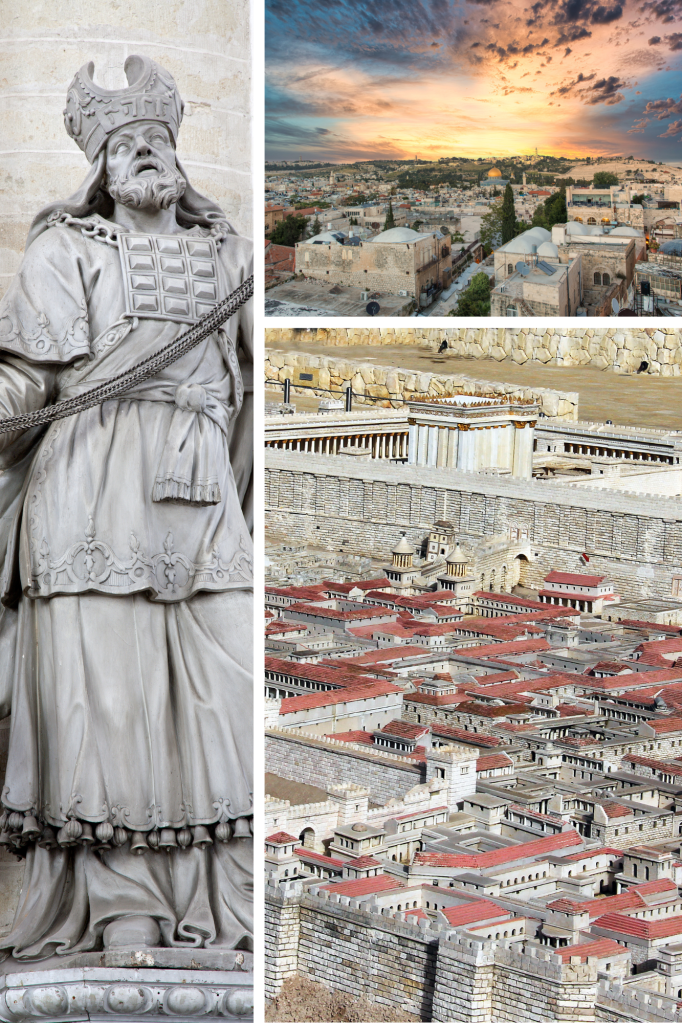
Then, Caiaphas sent Jesus bound before Pontius Pilate at the Praetorium. When Pilate questioned the Jews about Jesus, the Jews told Pilate that they could not put anyone to death. After Pilate questioned Jesus, he found know fault in Jesus. Because Jesus was a Galilean, Pilate sent Him to Herod:
Now Herod was very glad when he saw Jesus; for he had wanted to see Him for a long time, because he had been hearing about Him and was hoping to see some sign performed by Him. And he questioned Him at some length; but He answered him nothing. And the chief priests and the scribes were standing there, accusing Him vehemently. And Herod with his solders, after treating Him with contempt and mocking Him, dressed Him in a gorgeous robe and sent Him back to Pilate. Now Herod and Pilate became friends with one another that very day; for before they had been enemies with each other.
Luke 23:8-12 NASB
This exchange shows how much the Jewish leaders had a deal with Rome, which was another indictment against them for not bearing fruit in accordance with repentance. When Jesus returned to Pilate, Pilate still did not see guilt in Jesus, so he tried releasing Him with the tradition at the Passover feast where they released one prisoner. However, the crowd chose to release Barabbas and crucify Jesus; when Pilate condemned Jesus, it was about 8:00 am.
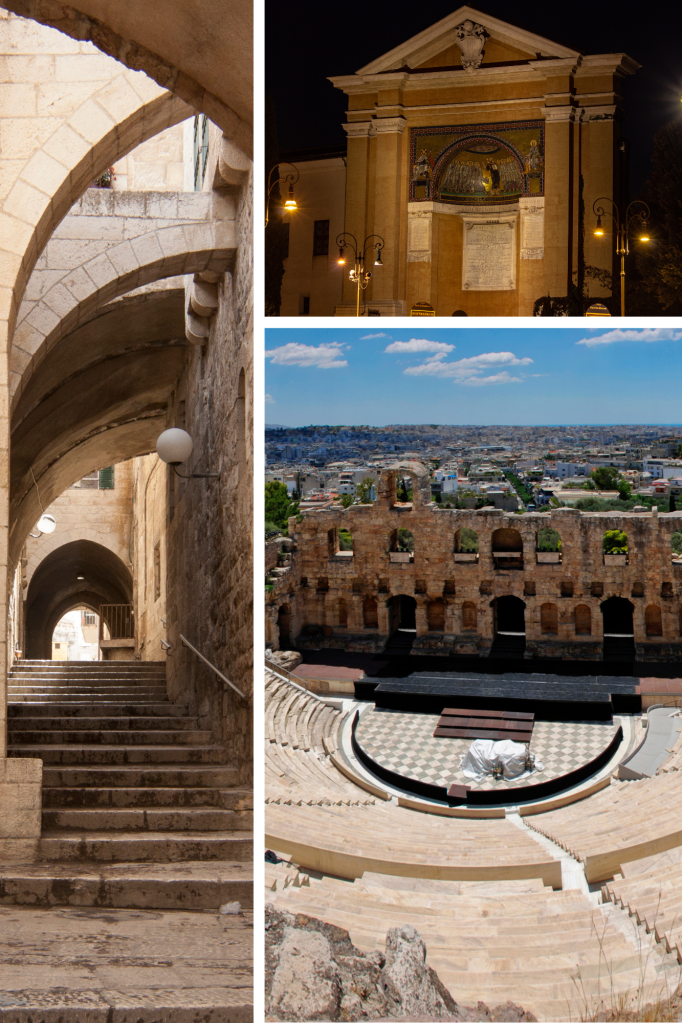
The crucifixion was at approximately 9:00 am, after Jesus was beaten in the Praetorium by the Roman soldiers. Jesus was lead through what is now called the Via Dolorosa (the way of suffering) in the Old City, a part of Jerusalem, to Golgotha (the place of the skull). Golgotha is the hill directly outside the city walls, and it was shaped like a skull, which is why it was called the Skull. Jesus hung on the cross from approximately 9:00 am to 3:00 pm, and there was darkness from 12:00 noon to 3:00 pm, when Jesus died. At that time, the veil of the temple was torn in two, meaning that the Gentiles in the farthest part of the Temple could see all the way into the Holy of Holies. There was also an earthquake. And people in the tombs who were dead came to life:
The tombs were opened, and many bodies of the saints who had fallen asleep were raised; and coming out of the tombs after His resurrection they entered the holy city and appeared to many.
Matthew 27:52-53 NASB
Jesus’ death was an event that should have had the whole city of Jerusalem saying what the centurion proclaimed, “Truly this was the Son of God!” (Matthew 27:54). However, there were still some who looked on and still did not believe.

That evening Joseph of Arimathea received the Jesus’ body from Pontius Pilate. Joseph prepared the body for burial and laid the body in his own tomb. He rolled a large stone in front of the tomb, which Pontius Pilate sealed and had Roman guards protect.
Holy Saturday
Saturdays were the Sabbath, so Jesus’ body was in the grave and the people were resting. It is possible they went back to the Upper Room to hide out.
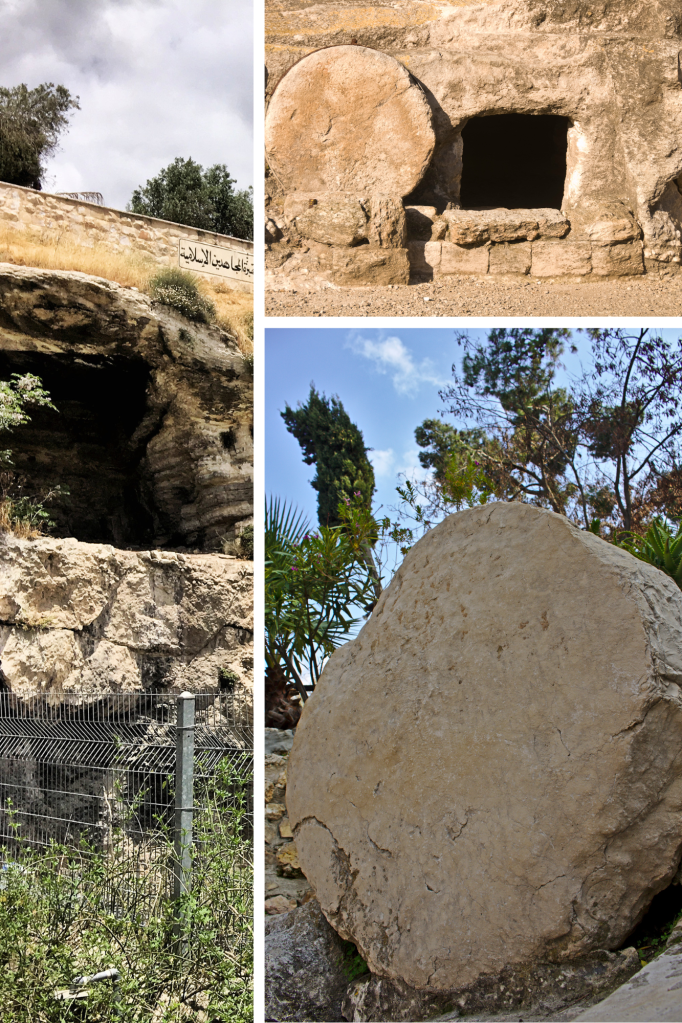
Resurrection Sunday (Easter Sunday)
That morning the women went to the Garden Tomb to take the prepared spices to Jesus’ body, but the stone was rolled away, His linen wrappings were folded lying there, and an angel told them to go tell the disciples that Jesus is risen. Jesus appeared to many before ascending to heaven to reign, and He will return. Death and the grave could not hold our King! He is Risen! Praise God! And because He is risen, we have hope (see 1 Corinthians 15).
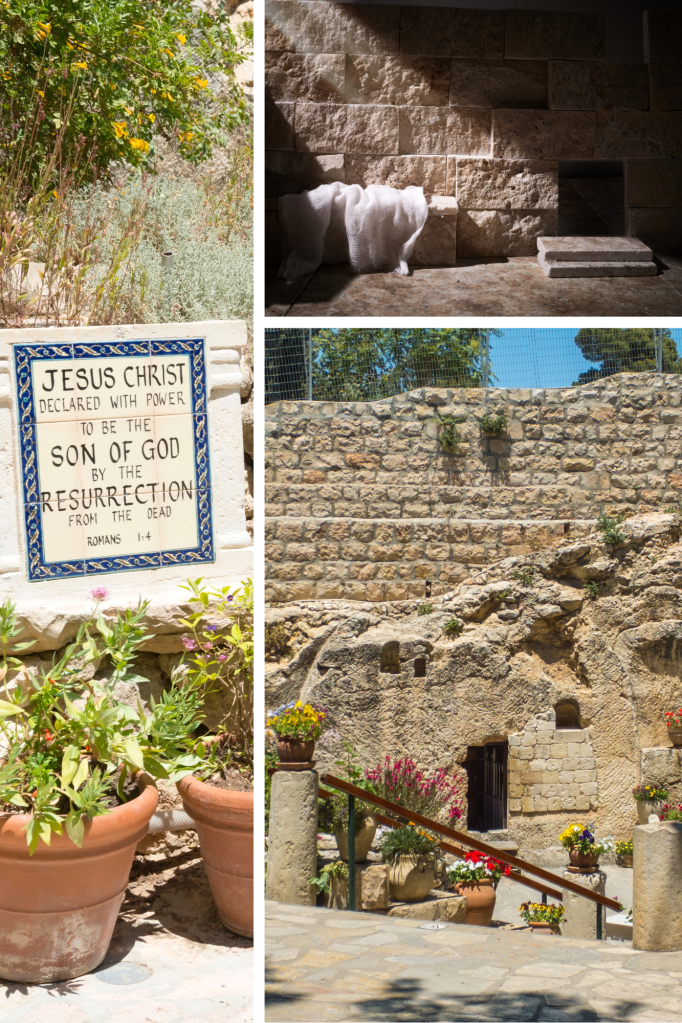
Resources on Resurrection Sunday (Easter) and Holy Week
- Ligonier – Holy Week Resources
- Ligonier – Resources on Easter
- Holy Week Bible Reading Plan
- Holy Week Bible Reading Plan from CSB Bible
- Holy Week Visual Timeline
- Logos – Explanation of Holy Week
- Holy Week Timeline
- Answers in Genesis – Good Friday Explanation
- Map of Holy Week
- Holy Week Chart with Bible Verses by ESV
- Holy Week Infographics
Travel to Israel
While there is the Israel – Hamas war going on, you can still plan your travel to Israel. One tour group that my Mom and I have looked at (before the war) to take a tour of Israel is Footsteps Ministries; it looks like they are planning for 2025.
Another place to keep an eye for tours of Israel and Biblical places is Ligonier Tours.
Join in on the Conversation
I always love hearing from my readers. Feel free to comment below, or join the conversation on X.com by following my account (x.com/sarahderinger88).
- Have you ever been to Israel?
- Have you ever been to Jerusalem or any of the places that Jesus walked?
- What was your favorite part about the trip?
- What adventures does your family enjoy?
